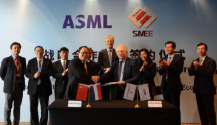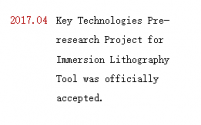Question. What do they use to produce 28nm chips? not aware they have immersion system…perhaps they have ebeam litho system? Thanks.
E beam is far too slow for even rudimentary mass production. Only possible for super high value super low volume items like photomasks.
There's a lot of processes that are not used in the leading edge semiconductor plants that are used elsewhere, due to equipment limitations or to maximize productivity of old equipment, such as dry KrF double exposure. Here's a paper from Germany describing getting 100 nm out of a non OPC KrF equipment with double exposure.
COMAC hasn't delivered a commercial product (mostly due to market share issues and being a late arrival to an industry that requires foreign approval) but SMEE already has decent market share in display, packaging and larger node lithography competing with Canon. If you set up a competitor to it then the logical thing for a company to do is abandon R&D to focus on what already makes money.I feel that China should set up a domestic competitor to SMEE.
My disquieting fear is that SMEE becomes another COMAC. Endless delays, and the final product never materialises.
If you have domestic competition, the end result is usually better.
Competition = high performance is just another form of market fundamentalism no less destructive than religious fundamentalism. See what happened to Russia and especially Ukraine.
Last edited:


